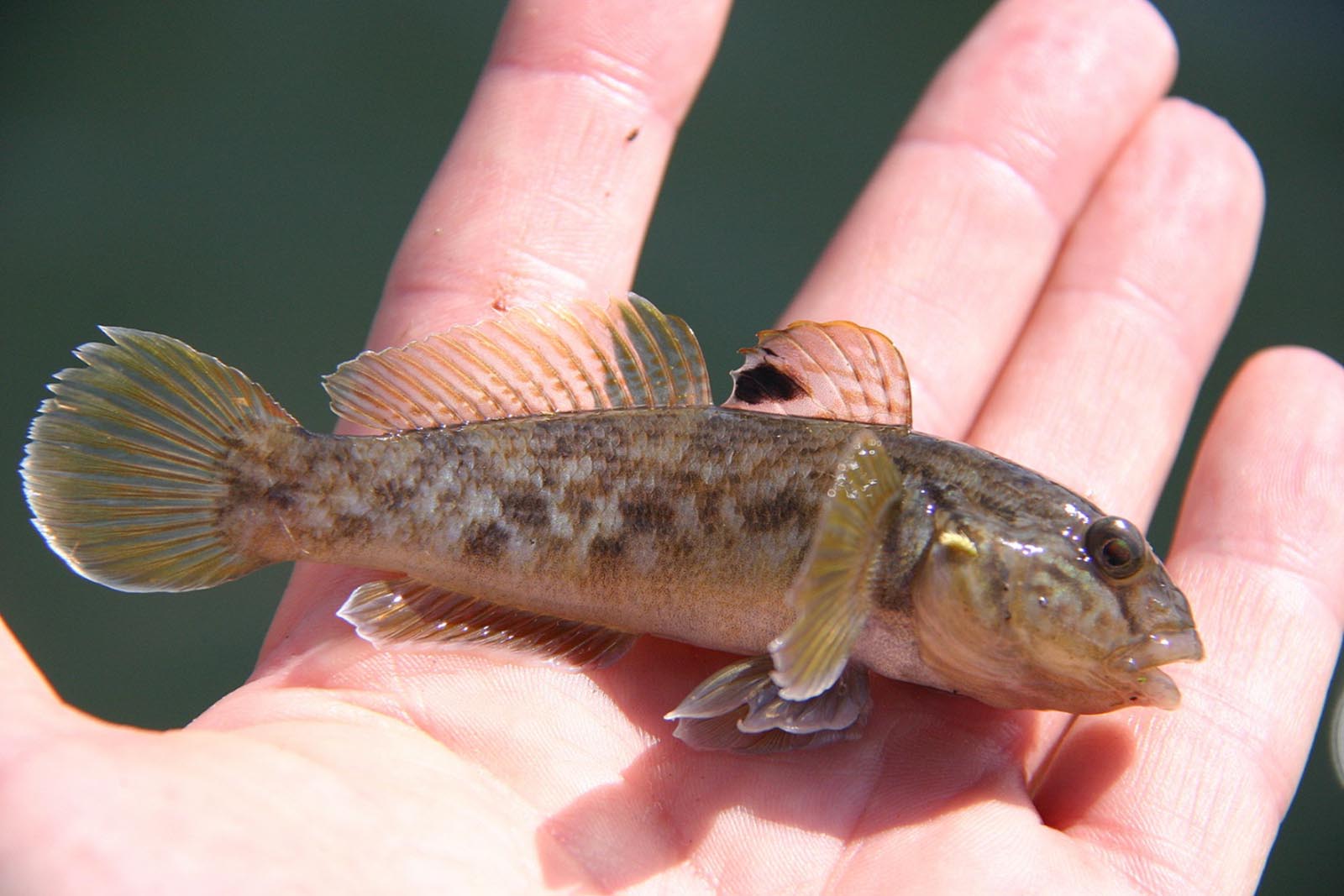
Are you fascinated by the colorful and diverse underwater world? If so, then you’ll definitely want to learn more about gobies fish, a fascinating group of small, but mighty fish found in oceans, lakes, and rivers around the world. With their vibrant colors, unique behaviors, and remarkable adaptations, gobies fish are a delight to observe and study.
In this article, we will dive into 19 interesting facts about gobies fish that will leave you amazed and intrigued. From their incredible ability to change colors to their complex social structure, gobies fish have a lot to offer. So, get ready to explore the captivating world of these remarkable fish, and discover why they are such a beloved and important part of the underwater ecosystem. Let’s jump right in!
Key Takeaways:
- Gobies are small, colorful fish found in diverse habitats, from coral reefs to freshwater streams. They have unique body shapes, exhibit interesting mating behaviors, and play essential roles in marine ecosystems.
- Gobies are fascinating fish with suction cup-like structures, vibrant colors, and the ability to make sounds. They form symbiotic relationships with shrimp, have complex social structures, and are popular in aquariums.
Gobies are a diverse family of fish.
Gobies belong to the family Gobiidae, which is one of the largest fish families with over 2,000 known species.
Gobies can be found in various habitats.
These small fish are found in both freshwater and saltwater environments, ranging from coral reefs and mangroves to rivers and streams.
Gobies have unique coloration.
Many gobies have vibrant colors, such as electric blue, neon yellow, and fiery red, making them visually striking underwater.
Gobies have a variety of body shapes.
Some gobies have elongated bodies, while others have compressed bodies, enabling them to adapt to different environments and feeding habits.
Gobies have a specialized suction cup-like structure.
Many gobies possess a sucker disc on their ventral side, allowing them to cling to rocks, coral, or other surfaces in fast-flowing water.
Gobies exhibit interesting mating behaviors.
Some gobies engage in monogamous relationships, while others form harems or engage in elaborate courtship displays to attract mates.
Gobies are small in size.
Most gobies are relatively small, measuring between 1 to 4 inches in length, although some species can grow up to 10 inches long.
Gobies have excellent camouflage abilities.
Many gobies can change their body coloration to match their surroundings, providing effective camouflage to avoid predators.
Gobies are carnivorous.
These fish have a diverse diet, feeding on small invertebrates, crustaceans, algae, and even other smaller fish.
Gobies exhibit parental care.
Some gobies guard and care for their eggs, while others carry their eggs in their mouths until they hatch.
Gobies have a symbiotic relationship with shrimp.
Certain gobies form symbiotic partnerships with pistol shrimp, where the shrimp dig and maintain burrows while the gobies act as a lookout for predators.
Gobies play an essential role in marine ecosystems.
As bottom-dwelling fish, gobies help control populations of small invertebrates, contribute to nutrient cycling, and serve as a food source for larger predators.
Gobies can make sounds.
Some species of gobies produce distinct clicking sounds by grinding their pharyngeal teeth together, which serves as a form of communication.
Gobies have a lifespan of 2-4 years.
On average, gobies live for about 2 to 4 years, although some species have been known to live for longer periods.
Gobies have a wide global distribution.
Gobies can be found in various regions worldwide, including the tropical and subtropical areas of the Atlantic, Indian, and Pacific Oceans.
Gobies can tolerate low oxygen levels.
Some gobies have the ability to breathe air and survive in low-oxygen environments, such as stagnant ponds or tide pools.
Gobies are commonly kept in aquariums.
Due to their small size and attractive colors, many gobies are popular choices for aquarium enthusiasts.
Gobies have a unique way of swimming.
Instead of using their tails, gobies rely on their pectoral fins to propel themselves through the water with quick and agile movements.
Gobies have a complex social structure.
Some gobies form hierarchical social structures, with dominant individuals maintaining territories and subordinate gobies seeking protection within those territories.
Conclusion
Gobies are fascinating fish that inhabit various aquatic environments around the world. With their unique adaptations, vibrant colors, and interesting behaviors, they have captivated the attention of scientists and aquarium enthusiasts alike. Whether you’re interested in their intricate mating rituals, their ability to change colors, or their significant ecological roles, gobies never fail to impress.
From the elusive and rare species to the commonly found gobies, their diversity is truly remarkable. These small but mighty fish play a crucial role in maintaining the balance of marine ecosystems. As we continue to explore and learn more about gobies, there is no doubt that we will uncover even more fascinating facts about these incredible creatures.
FAQs
1. What is the average lifespan of gobies?
Gobies typically have a lifespan of 2 to 5 years, although some species have been known to live longer in ideal conditions.
2. Are gobies suitable for home aquariums?
Yes, many gobies make great additions to home aquariums. However, it’s important to research specific species’ requirements and compatibility before introducing them to your tank.
3. Do all gobies have the ability to change colors?
No, not all gobies have the ability to change colors. Only certain species, such as the neon goby, possess this remarkable trait.
4. Are gobies aggressive towards other fish?
While some gobies can be territorial and aggressive towards their own kind, most are peaceful and can coexist with other non-aggressive fish species.
5. Are gobies capable of surviving in freshwater?
Yes, some gobies are adapted to live in freshwater environments, while others are strictly marine or brackish water species.
6. Do gobies have any specific reproductive behaviors?
Yes, gobies have fascinating reproductive behaviors. Some species engage in elaborate courtship rituals, while others exhibit complex hierarchical systems within their social structures.
7. Can gobies be kept together in the same tank?
It depends on the species. Some gobies can live peacefully in groups, while others are more territorial and should be kept individually or in carefully selected pairs.
8. What is the smallest species of goby?
The smallest species of goby is the Pandaka pygmaea, also known as the pygmy goby, which reaches a maximum size of only 1 centimeter.
9. Are gobies important in the ecosystem?
Yes, gobies play important roles in their respective ecosystems. They are often key indicators of environmental health and contribute to nutrient cycling and food webs.
10. Can gobies be trained or tamed?
While gobies are not typically known for their intelligence, some species can be trained or conditioned to recognize and respond to certain stimuli or cues.
Gobies are truly remarkable creatures, and their unique adaptations, behaviors, and habitats make them a fascinating subject for aquarium enthusiasts and marine biology buffs alike. If you're eager to learn even more about these incredible fish, be sure to check out our article on goby facts, which delves deeper into the world of these captivating aquatic wonders. From their symbiotic relationships with shrimp to their ability to thrive in various environments, there's always more to discover about the amazing goby family.
Was this page helpful?
Our commitment to delivering trustworthy and engaging content is at the heart of what we do. Each fact on our site is contributed by real users like you, bringing a wealth of diverse insights and information. To ensure the highest standards of accuracy and reliability, our dedicated editors meticulously review each submission. This process guarantees that the facts we share are not only fascinating but also credible. Trust in our commitment to quality and authenticity as you explore and learn with us.


